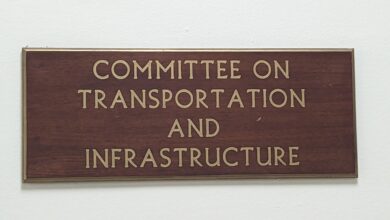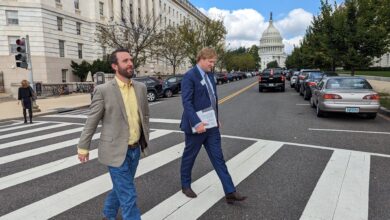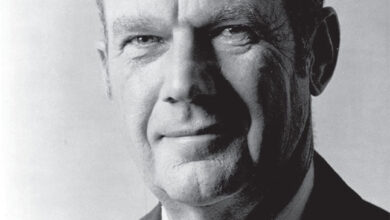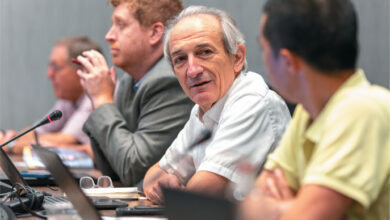Q&A With Jay Hansen
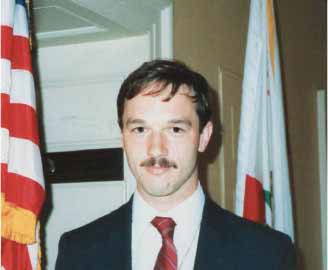
Asphalt Pavement posed several questions to NAPA’s outgoing Executive Vice President for Advocacy Jay Hansen as he retires after a career that gave him the reputation as the “prince of asphalt” of the Beltway area around Washington, D.C.
You credit a San Diego State political science professor in the 1980s with helping you set your path toward government and politics. What do you remember about the professor, his class, or what he said, that still resonates today?
I loved my Constitutional Law class led by Professor Heck. I even went back about 20 years later to the SDSU campus to see him and thank him for helping me find my career path. He said not many students ended up in Washington. Also, the requirement to do an internship changed my life. That introduced me to Congress for the first time. By the way, my first campaign was for Gene Piggott in 1976 for county seat in Erie, Buffalo, N.Y.
One skill you refined on Capitol Hill was rewriting political jargon into content that was easy for readers to understand, and it has served you well in your career whether you were writing about policy for members of Congress or members of NAPA via Action News. What is it about demystifying government for others that has consistently called to you all these years?
I just received a call from Don Rosenberg who is retiring from Delta Companies (MO) at the end of the year. He wanted to let me know how much he appreciated working with me and that it really meant a lot to him. He told me I was like his mentor, and he learned so much. That is the point, every time I present or work with people, it seems like at the time it may not necessarily sink in, but over time, people really see the value and let me know. That has happened to me over and over and validates what I believe is true: People really want to know—in plain language—how their government works. This is especially true today with so much misinformation in circulation and people do not know who to trust. Over the years, I have earned that trust with our members. They really rely on me for the facts.
One of your first major accomplishments in the association space was identifying and defeating an amendment not aligned with ACEC’s interests, much akin to the pavement selection mandates you prevented in your work with NAPA. When compared to your funding achievements, like securing IIJA funding, which legislative victories do you relish the most?
Actually, the achievement I relish the most was putting together the partnership between the Smithsonian and NAPA that raised over $1 million and led to the installation of an asphalt pavement in the National Museum of American History for their America on the Move permanent exhibit. That exhibit reaches over 4 million people a year who learn about the role asphalt pavements played in America’s economic progress, from the 1800s to the 21st century. And this project started by me listening to an NPR story on bringing back a concrete pavement from Route 66 in Oklahoma for a new exhibit. I said asphalt has to be part of this new exhibit. And we were.
But back to legislation, I feel most accomplished when I leave the House or Senate office building at night and pause to look at the beautiful Capitol dome, lit up in the night sky, and I pause, feeling goosebumps, and ask God, “why me?” How did this happen that I am so blessed to represent the asphalt pavement industry on these sacred grounds? This is when I feel most accomplished when I think of all the legislative achievements that have accrued over the years. It really is quite amazing.
Of the changes in Congress over your career, one of the more noticeable has been the growing length of transportation bill texts, a sign of how there are more considerations and complications involved than ever before. In the future, what might these bills look like, and will there be room for earmarks?
Members of Congress really need to look at the institution and take action to restore the public’s trust in our government. The legislative process is broken. Massive bills are cobbled together by leadership, without committee input, without the input of either the House or Senate members, with no legislative report language to understand congressional intent, and members of Congress have to vote up or down on massive legislation released hours before without knowing what’s in these bills. It’s a dark, opaque process the fuels cynicism of government. I think it’s really important to get back to the traditional legislative process of moving bills through the committee hearing and markup process, and reconciling bills between the House and Senate before they are sent to the President. This requires compromise and right now I don’t see it. Earmarks will always be a feature of infrastructure legislation, but in today’s political climate, earmarks alone do not secure votes to pass legislation.
IIJA implementation and looming legislative challenges like Buy Clean, Buy American, and rulemaking for the Davis-Bacon Act mean government affairs will play an even larger role in infrastructure development in the coming years. What types of partnerships and coalitions do you think will benefit the industry most as it pivots to a new era of funding and oversight?
When I started my post-Congress career with the American Council of Engineering Companies, I used to hear the word “partnership” a lot. There was the National Partnership for Highway Quality that pulled together AASHTO, industry, and academia to conduct surveys on what the American people wanted, which was smooth roads. The first white paper I prepared in the runup to TEA-21 was called “Partnerships for Quality” and included the first recommendations ever on environmental streamlining. The TCC Fly-in was put together in 2001 as a partnership of the highway construction community. Today, these partnerships need to be strengthened. It’s a new generation in charge that were not around when these partnerships were established.
In order to decarbonize the highway construction industry, it will require an active partnership between the Federal government, state highway agencies, associations at the Federal and state level, the construction industry, academia, and the public. For example, the Federal government wants to prioritize low carbon asphalt and concrete in procurement. This will require the asphalt pavement industry to innovate, for state specifications to change, and for state governments to pay more sometimes for the low-carbon mix. Mandates never worked but incentives, grants, and tax credits, if applied fairly across the board, will move the industry to decarbonize. And if we all work together in partnership, we can accelerate the implementation of low-carbon technologies and save these precious, limited resources for future generations.

